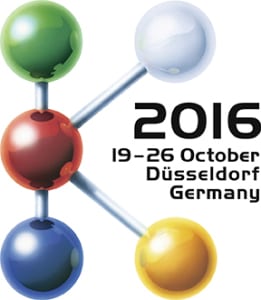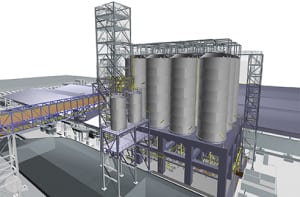 Some 3,100 exhibitors from almost 60 nations will be showing their products and services on more than 170,000 m2 of net exhibition space during K 2016 (Düsseldorf, Germany; October 19–26) — the international trade fair for plastics and rubber. “Nowhere in the world can one experience the full breadth of raw materials, processing and application equipment as completely as at K in Düsseldorf,” says Werner Dornscheidt, president and CEO of Messe Düsseldorf, the show’s organizer (www.k-online.com).
Some 3,100 exhibitors from almost 60 nations will be showing their products and services on more than 170,000 m2 of net exhibition space during K 2016 (Düsseldorf, Germany; October 19–26) — the international trade fair for plastics and rubber. “Nowhere in the world can one experience the full breadth of raw materials, processing and application equipment as completely as at K in Düsseldorf,” says Werner Dornscheidt, president and CEO of Messe Düsseldorf, the show’s organizer (www.k-online.com).
As always, K 2016 will occupy all the exhibition space at Messe Düsseldorf, with products and services filling all of the venue’s 19 halls. All of the industry’s core business areas are present, including machines and equipment, raw materials and auxiliaries, semi-finished products, technical parts and reinforced plastics, and services.
A small sample of products and services on display during K 2016 is presented below.
A new approach to plant planning
Nowadays, billion-euro investment decisions in the plastics production and processing industry are made in a very short time. According to this company’s managing director, Rochus Hofmann, the time between an investment decision and commissioning is less than half of what it was a few years ago. These challenges can only be met with better and faster planning. At K 2016, this company is demonstrating its new approach to planning and designing plants for the plastics industry. While a traditional machine construction company focuses on the machine, a plant engineering company’s planning will keep the total plant in mind, using various planning tools. One of them is the Zeppelin Value Engineering concept, which enables extensive discussions and the optimization of the plant concept in digital form at a very early stage. This leads to better concept solutions such as optimized piping, improved room layout or perfect positioning of all components, and shorter distances. This company’s planning software supports this process (photo). In the future, focus will be set on innovatively developing the planning process, for example by further improving digitalization — not only when planning, but also with the use of components that can communicate in a digital network. Therefore, this company focuses its component development on a new product segment named “smart components” and will also present new ideas regarding Industry 4.0. Hall 9, Booth B41 — Zeppelin Systems GmbH, Friedrichshafen, Germany
